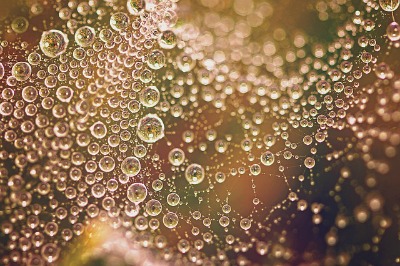What are the various properties of water?
A fluid that is most abundant on earth, water plays an essential role in plant physiology and thus in crop agriculture.
Familiarity with these properties will further simplify understanding of water’s crucial roles.

First, the polarity of the water molecule and its hydrogen-bonding properties.
Water is a multimolecule, comprising various molecules of water bonded to one another.
Properties of Water
1. The water molecule (H2O) is a polar molecule with a strong tendency to form hydrogen bonds.
The water molecule consists of two hydrogen atoms joined to a single oxygen atom by a covalent bond.
A covalent bond is that force that holds together the atoms comprising a molecule. It is such a force of attraction in which two atoms share a pair of electrons.
An electron is a subatomic particle that carries a negative electrical charge. It possesses energy.
Like a magnet with a north and a south pole, a polar molecule has two ends, one with a partial positive electrical charge and the other partially negative.
The water molecule is a polar molecule because of the unequal sharing of electrons by the oxygen and hydrogen atoms.
The oxygen atom has a greater attraction for the electron pair of the bond than hydrogen.
As a result, the oxygen atom assumes a partially negative charge.
Oxygen is more electronegative in relation to the two hydrogen atoms while each of the hydrogen atoms is considered electropositive in relation to the oxygen atom.
As provided by Bettelheim and March (1998), the electronegativity (a measure of the attraction of an atom for electrons) of oxygen is 3.5 while that of hydrogen is only 2.1.
The electropositive hydrogen atom in one molecule of water can be attracted by electronegative oxygen in another molecule of water or another electronegative atom in other substances.
This creates an intermolecular hydrogen bond.
The hydrogen bonds are weak bonds, meaning that they are easily broken. Nonetheless, they can be reformed.
The forming and breaking or any change in these bonds have bearing on the transformation of water from one form to another.
The formation of hydrogen bonds, like other chemical bonds, requires an expenditure of energy.
When it is broken, energy is released.
Hydrogen bonds are only about one-tenth as strong as the covalent bonds which hold the atoms within molecules.
According to Bettelheim and March (1998), covalent bonds possess about 50-100 kilocalories of energy per mole but hydrogen bonds have an energy content of only around 5-10 kcal/mole.
However, because there are so many, hydrogen bonds create a cumulatively strong bond responsible for the stability of water.
Some other unique properties of water which are essential or otherwise important in plant growth and development are treated separately in the component pages.
These include the excellent solvent property of water, its high specific heat, high heat of vaporization and boiling point, less density as ice than as a liquid, and cohesion-adhesion property.
The last component page also bears the list of references.
Details on the significance of the polarity and H bonding properties of water are noted in explaining the other properties.
